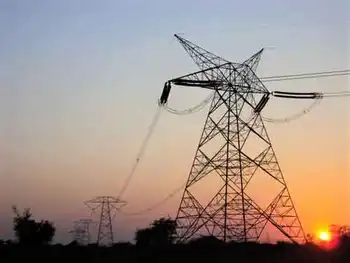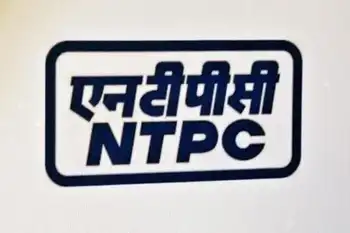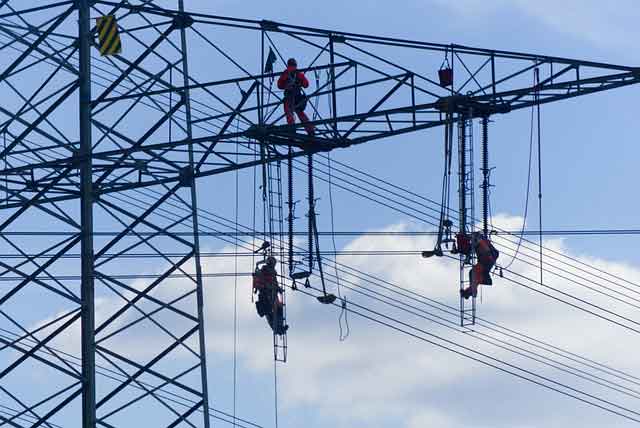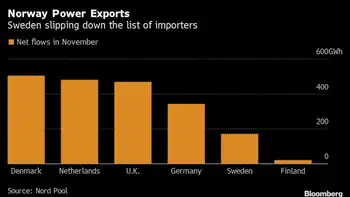Group campaigns against Indiana-based utility's plan to buy power
MUNSTER, INDIANA - The state's largest grass-roots consumer group has started to campaign against Northern Indiana Public Service Co.'s plan to buy electricity from sister company Whiting Clean Energy.
The Citizen's Action Coalition considers the plan, which the state's utility consumer agency has agreed to in principle, another "bailout" for parent NiSource Inc., according to Grant Smith, CAC executive director.
"We have a big enough problem with people being able to afford heat," Smith said. "And now we're reaching that point with electric."
Although NIPSCO has not released any estimate of how much the purchases might cost customers, LaPorte County officials involved in the case estimate it could hike electric bills up to 10 percent.
NIPSCO contends the deal is necessary to meet critical summer and long-term demands and has asked the Indiana Utility Regulatory Commission for expedited proceedings.
"We believe this is an appropriate solution to meeting customer demand for safe, reliable electric power," said Tom Cuddy, a NIPSCO spokesman.
"Our ability to purchase flexible and reliable power is critical to meeting the needs of all our customers."
NIPSCO officials currently are preparing estimates of how the purchases might affect customer bills, Cuddy said.
NIPSCO supplies some of the largest steel mills in the United States with power as well as medium-size businesses and hundreds of thousands of residential customers.
NIPSCO witnesses, including top executives, have laid out a case that the Whiting Clean Energy plant's ability to produce power on demand will help the utility meet reliability standards set by the North American Electric Reliability Council.
Whiting Clean Energy is a natural gas-fired electric generation plant as opposed to NIPSCO's plants, which are coal-fired.
The state's Office of Utility Consumer Counselor, the state agency representing utility customers, has signed a memorandum of understanding with NIPSCO on the proposed purchases.
That memorandum of understanding calls for a third-party study of the purchases to determine if they are necessary. The purchases would be made through another NiSource subsidiary, EnergyUSA.
The OUCC has agreed it may recommend a hike in NIPSCO charges based on the results of that study.
That hike would come in the form of a purchased power tracker, which would allow the utility to recover extra costs associated with the purchases. Those costs can be steep. In late 2002, International Steel Group charged that power NIPSCO bought from other utilities hiked the steelmaker's electricity costs by $5 million to $10 million per year.
The Whiting Clean Energy plant has been a money-losing proposition for NiSource since it went into operation three years ago at the BP Whiting refinery. It chalked up a $32.8 million loss in 2004, according to NiSource's annual report.
The independent study into the purchases is to be completed next week. NIPSCO and the OUCC would have to put their memorandum of understanding into the form of a proposed agreement to seek approval from Indiana's Utility Regulatory Commission.
The commission plans to review any eventual agreement between NIPSCO and the OUCC "very thoroughly," according to Kristina Wheeler, an IURC spokeswoman.
"The commission is very interested, given all the concerns people have raised, to review it very deliberately," Wheeler said.
"I don't know if it will be done in the time frame NIPSCO wants it to be done."
The CAC's campaign started this week with briefings at area media outlets. It will continue as long as the issue is outstanding, according to Smith. It will include the mobilization of key CAC members in northern Indiana as well as door-to-door visits with NIPSCO customers.
In addition to its opposing the Whiting purchases, the CAC wants the IURC to immediately mount a rate case dealing with NIPSCO's basic rates.
The OUCC in 2002 won an important giveback from the utility when the utility regulatory commission ruled NIPSCO had to refund $225 million to customers over four years. That rebate would be extended at least two years under the memorandum of understanding between the OUCC and NIPSCO.
But the CAC said that refund was not large enough and that NIPSCO rates should be lowered permanently.
Related News

U.S. residential electricity bills increased 5% in 2022, after adjusting for inflation
WASHINGTON - In nominal terms, the average monthly electricity bill for residential customers in the United States increased 13% from 2021 to 2022, rising from $121 a month to $137 a month. After adjusting for inflation—which reached 8% in 2022, a 40-year high—electricity bills increased 5%. Last year had the largest annual increase in average residential electricity spending since we began calculating it in 1984. The increase was driven by a combination of more extreme temperatures, which increased U.S. consumption of electricity for both heating and cooling, and higher fuel costs for power plants, which drove up retail electricity prices.
Residential…




